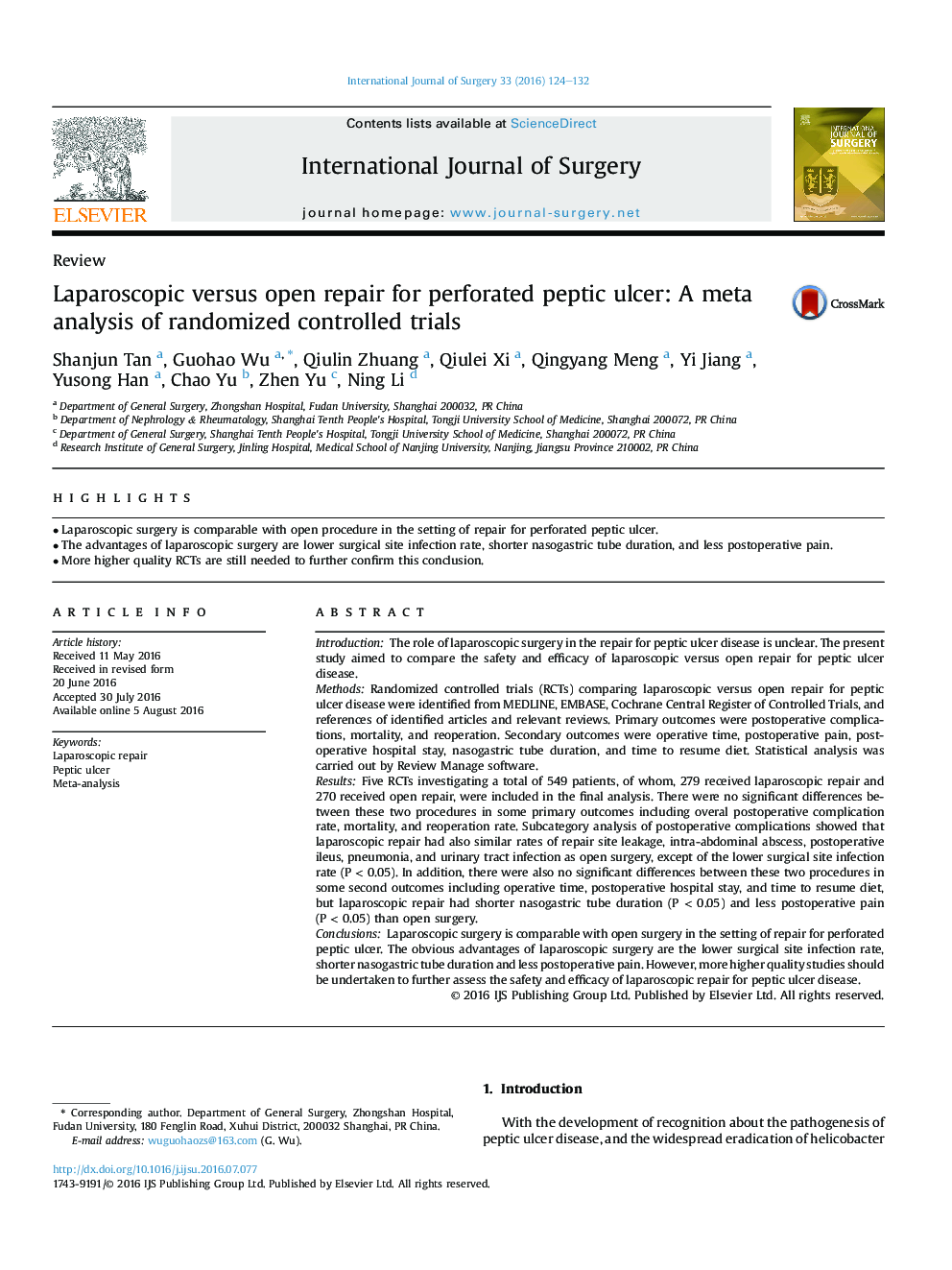| کد مقاله | کد نشریه | سال انتشار | مقاله انگلیسی | نسخه تمام متن |
|---|---|---|---|---|
| 4285295 | 1611953 | 2016 | 9 صفحه PDF | دانلود رایگان |
• Laparoscopic surgery is comparable with open procedure in the setting of repair for perforated peptic ulcer.
• The advantages of laparoscopic surgery are lower surgical site infection rate, shorter nasogastric tube duration, and less postoperative pain.
• More higher quality RCTs are still needed to further confirm this conclusion.
IntroductionThe role of laparoscopic surgery in the repair for peptic ulcer disease is unclear. The present study aimed to compare the safety and efficacy of laparoscopic versus open repair for peptic ulcer disease.MethodsRandomized controlled trials (RCTs) comparing laparoscopic versus open repair for peptic ulcer disease were identified from MEDLINE, EMBASE, Cochrane Central Register of Controlled Trials, and references of identified articles and relevant reviews. Primary outcomes were postoperative complications, mortality, and reoperation. Secondary outcomes were operative time, postoperative pain, postoperative hospital stay, nasogastric tube duration, and time to resume diet. Statistical analysis was carried out by Review Manage software.ResultsFive RCTs investigating a total of 549 patients, of whom, 279 received laparoscopic repair and 270 received open repair, were included in the final analysis. There were no significant differences between these two procedures in some primary outcomes including overal postoperative complication rate, mortality, and reoperation rate. Subcategory analysis of postoperative complications showed that laparoscopic repair had also similar rates of repair site leakage, intra-abdominal abscess, postoperative ileus, pneumonia, and urinary tract infection as open surgery, except of the lower surgical site infection rate (P < 0.05). In addition, there were also no significant differences between these two procedures in some second outcomes including operative time, postoperative hospital stay, and time to resume diet, but laparoscopic repair had shorter nasogastric tube duration (P < 0.05) and less postoperative pain (P < 0.05) than open surgery.ConclusionsLaparoscopic surgery is comparable with open surgery in the setting of repair for perforated peptic ulcer. The obvious advantages of laparoscopic surgery are the lower surgical site infection rate, shorter nasogastric tube duration and less postoperative pain. However, more higher quality studies should be undertaken to further assess the safety and efficacy of laparoscopic repair for peptic ulcer disease.
Journal: International Journal of Surgery - Volume 33, Part A, September 2016, Pages 124–132
